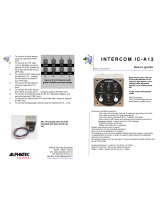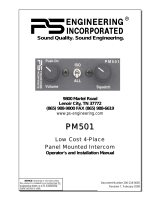
Revision 4, April 2009 Page 11 PAC24-Series Pilot Guide
Warranty and Service
Warranty
In order for the factory warranty to be valid, the installations in a certified
aircraft must be accomplished by an FAA-certified avionics shop and au-
thorized PS Engineering dealer. If the unit is being installed by a non-
certified individual in an experimental aircraft, a factory-made harness
must be used for the warranty to be valid.
PS Engineering, Inc. warrants this product to be free from defect in mate-
rial and workmanship for a period of three (3) years from the date of sale.
In the event of a problem, contact the authorized PS Engineering Dealer
where the product was purchased for assistance. Units will not be accepted
by PS Engineering for repair without a Return Authorization.
During the first twelve (12) months of the warranty period, PS Engineering,
Inc., at its option, will send a replacement unit at our expense if the unit
should be determined to be defective after consultation with the PS Engi-
neering dealer who sold the unit and a PS Engineering, Inc. factory techni-
cian.
For the remaining twenty-four (24) months of the PAC24-series, three-year
warranty period, PS Engineering, Inc., at its option, will send a replacement
unit at the customers expense if the unit should be determined to be defec-
tive after consultation with an authorized PS Engineering dealer.
All transportation charges for returning the defective units are the responsi-
bility of the purchaser. All domestic transportation charges for returning the
exchange or repaired unit to the purchaser will be borne by PS Engineering,
Inc. The risk of loss or damage to the product is borne by the party making
the shipment, unless the purchaser requests a specific method of shipment.
In this case, the purchaser assumes the risk of loss.
This warranty is not transferable. Any implied warranties expire at the ex-
piration date of this warranty. PS Engineering SHALL NOT BE LIABLE
FOR INCIDENTAL OR CONSEQUENTIAL DAMAGES. This warranty
does not cover a defect that has resulted from improper handling, storage or
preservation, or unreasonable use or maintenance as determined by us. This
warranty is void if there is any attempt to dissemble this product without
factory authorization. This warranty gives you specific legal rights, and you
may also have other rights, which may vary from state to state. Some states
do not allow the exclusion of limitation of incidental or consequential dam-
ages, so the above limitation or exclusions may not apply to you.
All items repaired or replaced under this warranty are warranted for the
remainder of the original warranty period. PS Engineering, Inc.
reserves















